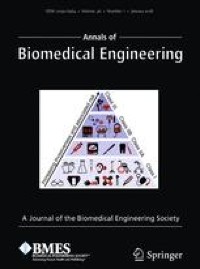|
Αρχειοθήκη ιστολογίου
-
►
2023
(256)
- ► Φεβρουαρίου (140)
- ► Ιανουαρίου (116)
-
►
2022
(1695)
- ► Δεκεμβρίου (78)
- ► Σεπτεμβρίου (142)
- ► Φεβρουαρίου (155)
-
▼
2021
(5507)
- ► Δεκεμβρίου (139)
- ► Σεπτεμβρίου (333)
-
▼
Απριλίου
(471)
-
▼
Απρ 20
(30)
- Long-term results of a randomized partial irradiat...
- Challenges and future directions in breast cancer ...
- Anisotropic Mechanical Properties of the Human Ute...
- Methodology for Evaluation of WIAMan Injury Assess...
- Miniature Flexible Instrument with Fibre Bragg Gra...
- Real-time automotive night-vision system for drive...
- Biorecovery of nanogold and nanogold compounds fro...
- Evaluation of VEGF-A in platelet and microRNA-126 ...
- DNA-derived nanostructures selectively capture gra...
- Development of a miRNA Sensor by an Inducible CRIS...
- Chitosan Versus Chitosan-Vanillin Modified: An Eva...
- Impact of Pre-Chemotherapy Education with Audio Vi...
- Validation of the atherothrombotic risk score for ...
- Small bowel T-cell lymphoma: a MEITL-ing diagnosis
- Determination of Significant Prognostic Factors fo...
- Giant Osteoma of the Mandible: Report of a Rare Ca...
- Unilateral versus bilateral nodal irradiation: Cur...
- An Alternative Explanation for Difficulties with S...
- Early postoperative serum albumin levels as predic...
- Phosphorylation of MYL12 by Myosin Light Chain Kin...
- Age and cancer treatment factors influence patient...
- Intracranial arachnoid cysts and epilepsy in child...
- Prognostic value of the pulse pressure amplitudes,...
- Myxofibrosarcoma: Another mimicker of meningioma
- Need for head and neck repositioning to restore el...
- Downregulation of Caveolin-1 and Upregulation of D...
- Seltener Tumor im Oberlid
- Therapie von Sprachentwicklungsstörungen: Eine Lei...
- β-Ecdysone attenuates cartilage damage in a mouse ...
- Prognostic Factors for the Outcome of Salivary Gla...
-
▼
Απρ 20
(30)
- ► Φεβρουαρίου (628)
-
►
2020
(1810)
- ► Δεκεμβρίου (544)
- ► Σεπτεμβρίου (32)
- ► Φεβρουαρίου (28)
-
►
2019
(7684)
- ► Δεκεμβρίου (18)
- ► Σεπτεμβρίου (53)
- ► Φεβρουαρίου (2841)
- ► Ιανουαρίου (2803)
-
►
2018
(31838)
- ► Δεκεμβρίου (2810)
- ► Σεπτεμβρίου (2870)
- ► Φεβρουαρίου (2420)
- ► Ιανουαρίου (2395)
-
►
2017
(31987)
- ► Δεκεμβρίου (2460)
- ► Σεπτεμβρίου (2605)
- ► Φεβρουαρίου (2785)
- ► Ιανουαρίου (2830)
-
►
2016
(5308)
- ► Δεκεμβρίου (2118)
- ► Σεπτεμβρίου (877)
- ► Φεβρουαρίου (41)
- ► Ιανουαρίου (39)
Αλέξανδρος Γ. Σφακιανάκης
ΩτοΡινοΛαρυγγολόγος
Αναπαύσεως 5
Άγιος Νικόλαος Κρήτη 72100
2841026182
6032607174
Τρίτη 20 Απριλίου 2021
Anisotropic Mechanical Properties of the Human Uterus Measured by Spherical Indentation
Εγγραφή σε:
Σχόλια ανάρτησης (Atom)



Δεν υπάρχουν σχόλια:
Δημοσίευση σχολίου